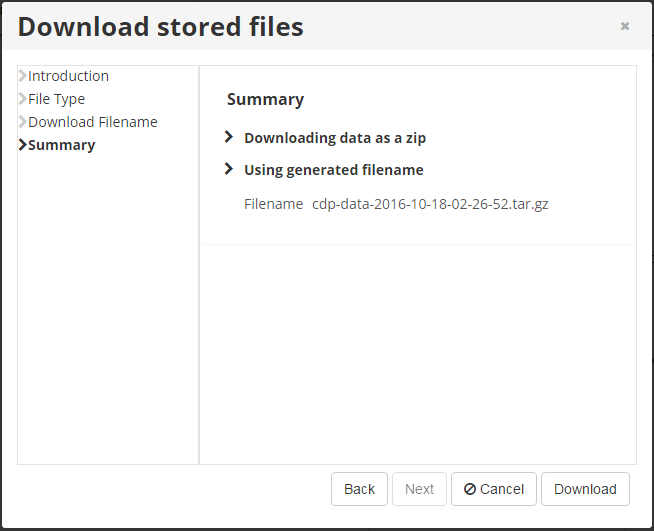The Backup Manager users can restore entire Device(s) or selected files and folders from any Recovery Point. You can also extract files from a Recovery Point to an off-site server or a local hard disk.
To restore data in the Backup Manager, follow the instructions below.
1. Click Protected Machines in the Main Menu to open the Protected Machines screen.
2. For the protected machine you want to restore, click the corresponding Actions menu and select Open Recovery Points. 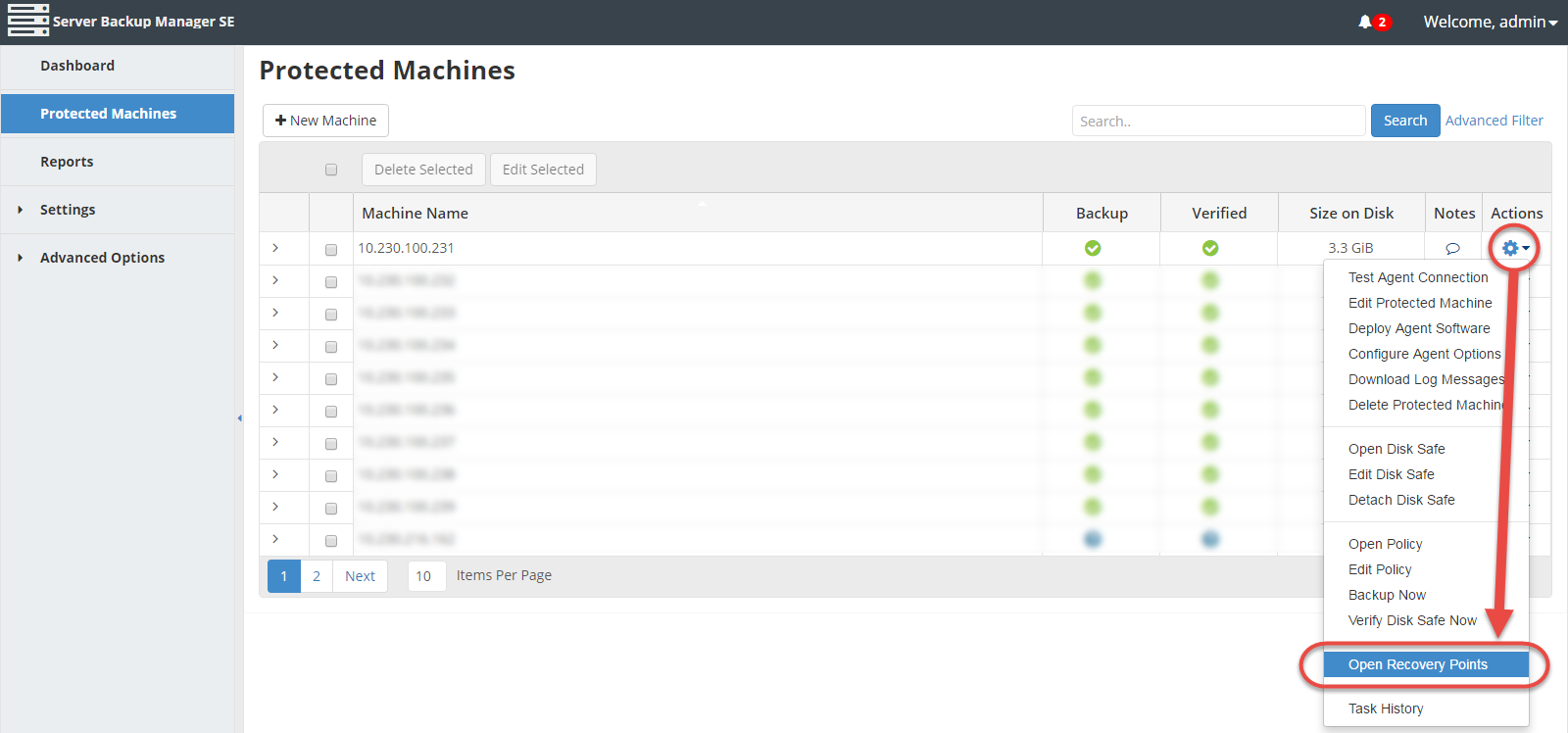
The Recovery Points window for the protected machine displays.
3. Find a recovery point in the Recovery Points window, click the corresponding Actions menu, and select Browse.
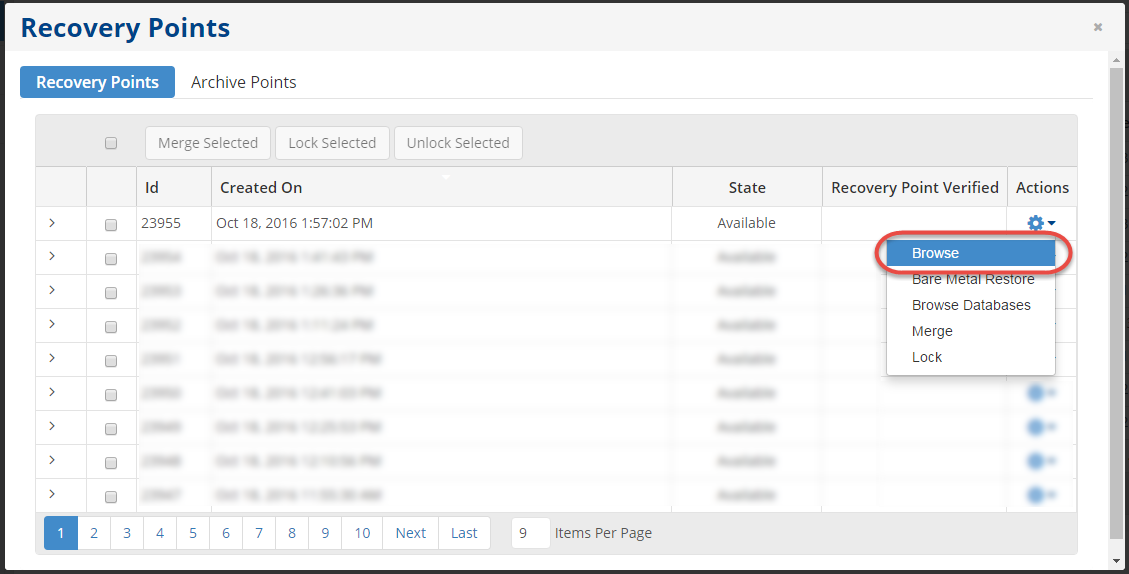
| Note If you configured the encryption during Disk Safe creation, you will be asked to enter the encryption passphrase when you click Browse, Bare Metal Restore, Browse Databases, or Exchange in the Actions menu. |
4. The Browse Recovery Point window displays.

| Note For more information, refer to Browse recovery points. |
5. Select the check boxes next to the files and folders you want to restore and click the Restore Selected button. 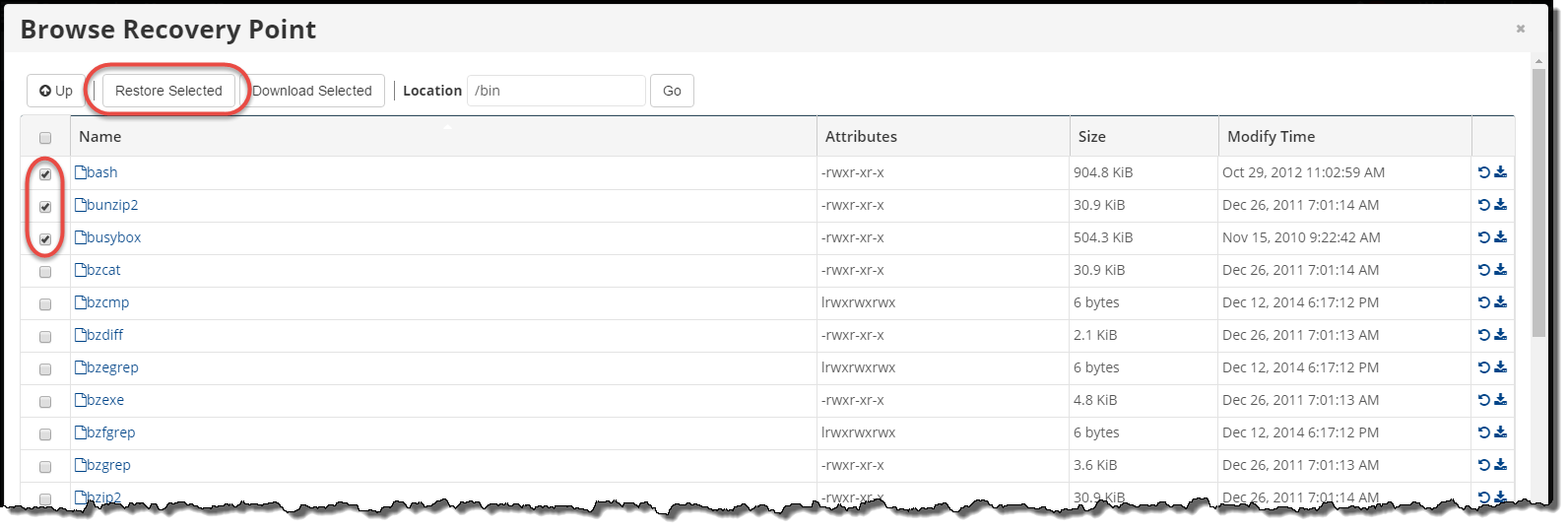
6. The Restore Files window displays.
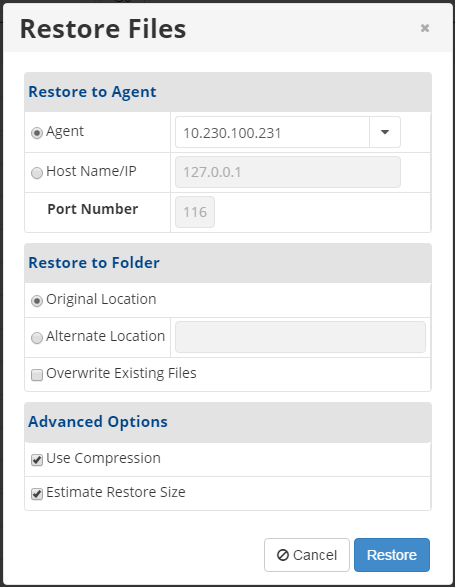
Specify the following options in this window:
Restore to Agent
- Agent - Select this option to restore to a protected machine that is already in the system. Connects to the machine named and uses the port configured.
- Host Name/IP - Select this option to connect to a specified hostname and port. This option allows you to restore to a host with a Host Name/IP address that is different than the original host.
- Port Number - Enter the port number to used with the Host Name/IP specified.
Restore to Folder
- Original Location - Restores to the same directories as when the Recovery Point was created.
- Alternate Location - Specify a path on the Host to restore the files to. The complete path and directory structure of all selected files will be created under the path specified here. If the specified path does not exist, it will be created.
- Overwrite Existing Files - (Optional) Select this check box to overwrite any existing files or directories with the same name, even if they are newer.
Advanced Options
| Note The Advanced Options are enabled by default. |
- Use Compression - Compression works under the hood using QuickLZ. If the compressed size is larger than the uncompressed size, the files are sent uncompressed.
- Estimate Restore Size - When enabled, you can see the additional "Estimated Restore Size" and "Estimated Object Count" values in the "Reporting" page - "Summary" tab - "Restore Status" area.
7. Click the Restore button to restore the files.
The Details for Restore Files screen displays the progress of the task. This screen can be closed and reopened from the Dashboard.
| Tip The task results can be sent via email as a Report. |
8. Once the file restore is complete, the Details for Restore Files screen automatically displays the following information:
- File Restore Summary - Displays a success or failure message, the number of files restored, and the number of files failed (if any).
- File Restore Statistics - Displays time of restore, average network ratio, number of restored bytes, and compression ratio.


Note
If the compressed size is larger than the uncompressed size, the files are sent uncompressed.
9. To view the Restore Task details, access the Task History for the protected machine and click your last task. See Access Task History for more information.
Downloading Files as an Archive
In the Backup Manager, you can download the files stored in Recovery Points as a .tar or a .zip archive. Follow the instructions below.
1. Select the Recovery Point you want to save files from, click the Actions menu and select Browse. See the instructions above.
The Browse Recovery Point window displays.
2. In the Browse Recovery Point window, select the check boxes next to the files or folders you want to download and click the Download Selected button.

3. The Download Stored Files wizard displays. Review the introductory information and click Next to continue generating the archive for downloading.

4. On the File Type screen, select the type of the archive file. The following options are available:
- Download files as a tar - Select this option to download data as a .tar file. This option is preferable for Linux users.
- Compress tar file with gzip - Check this box to compress a .tar file with gzip compression.
- Download files as a zip - Select this option to download data as a .zip file. This option is preferable for Windows users.
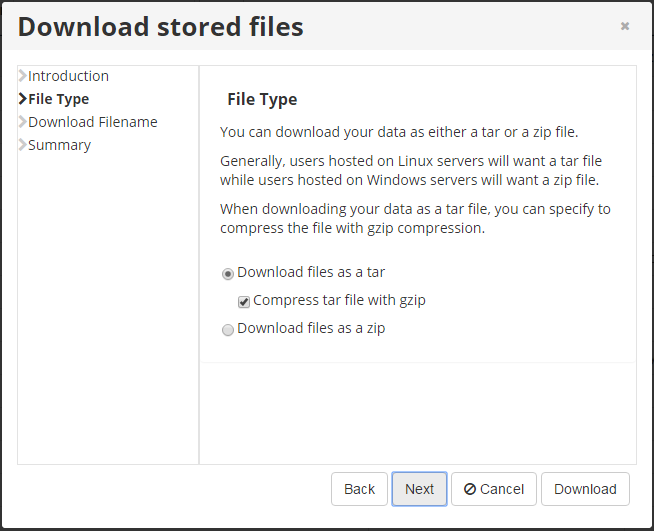
Click Next.
5. On the Download Filename screen, define the name of the archive. The following options are available:
- Use Generated Filename - Select this option to generate the file name automatically. The name will be in the following format:
cdp-data-[date of Recovery Point creation]-[time of Recovery Point creation]
Example: cdp-data-2011-07-09-03-00-06.tar.gz
- Specify Filename - Select this option to input a custom file name in the corresponding Filename field.

Note
You do not need to specify the extension of the file. It will be appended automatically.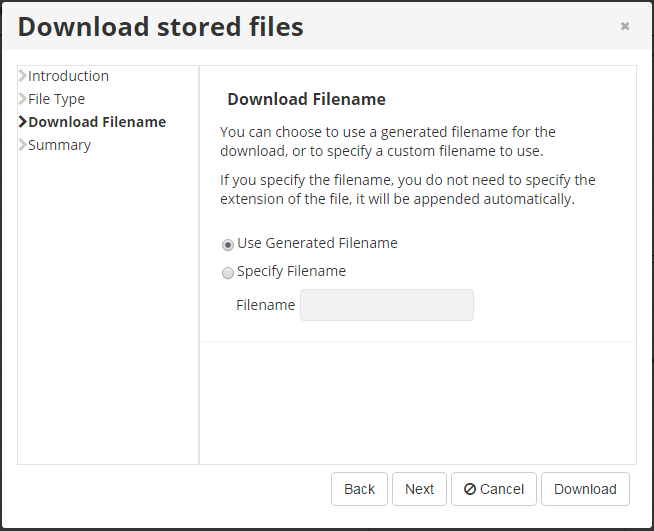
Click Next.
6. On the Summary screen, review the settings you have selected and click the Download button to obtain the archive.
